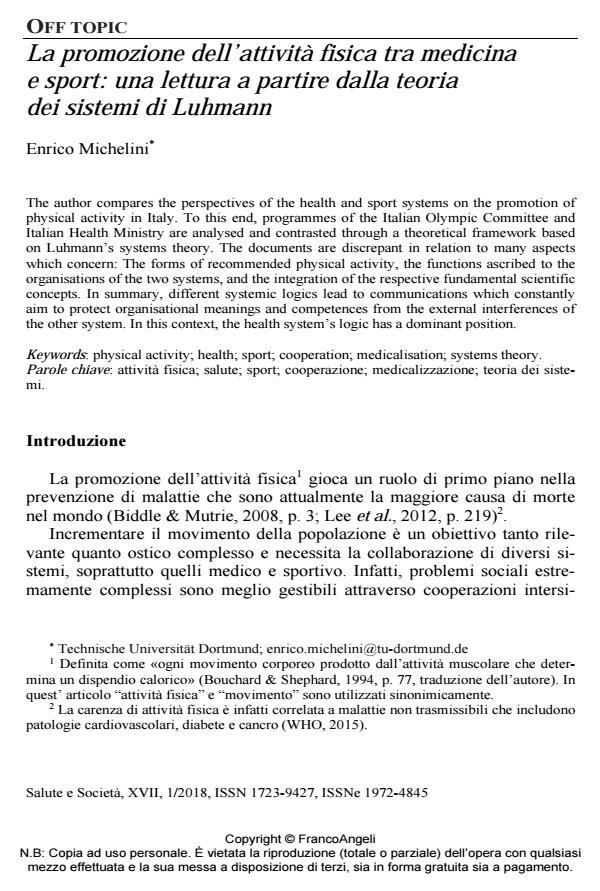La promozione dell’attività fisica tra medicina e sport: una lettura a partire dalla teoria dei sistemi di Luhmann
Journal title SALUTE E SOCIETÀ
Author/s Enrico Michelini
Publishing Year 2018 Issue 2018/1
Language Italian Pages 18 P. 141-158 File size 215 KB
DOI 10.3280/SES2018-001010
DOI is like a bar code for intellectual property: to have more infomation
click here
Below, you can see the article first page
If you want to buy this article in PDF format, you can do it, following the instructions to buy download credits

FrancoAngeli is member of Publishers International Linking Association, Inc (PILA), a not-for-profit association which run the CrossRef service enabling links to and from online scholarly content.
The author compares the perspectives of the health and sport systems on the promotion of physical activity in Italy. To this end, programmes of the Italian Olympic Committee and Italian Health Ministry are analysed and contrasted through a theoretical framework based on Luhmann’s systems theory. The documents are discrepant in relation to many aspects which concern: The forms of recommended physical activity, the functions ascribed to the organisations of the two systems, and the integration of the respective fundamental scientific concepts. In summary, different systemic logics lead to communications which constantly aim to protect organisational meanings and competences from the external interferences of the other system. In this context, the health system’s logic has a dominant position.
Keywords: Physical activity; health; sport; cooperation; medicalisation; systems theory.
Enrico Michelini, La promozione dell’attività fisica tra medicina e sport: una lettura a partire dalla teoria dei sistemi di Luhmann in "SALUTE E SOCIETÀ" 1/2018, pp 141-158, DOI: 10.3280/SES2018-001010